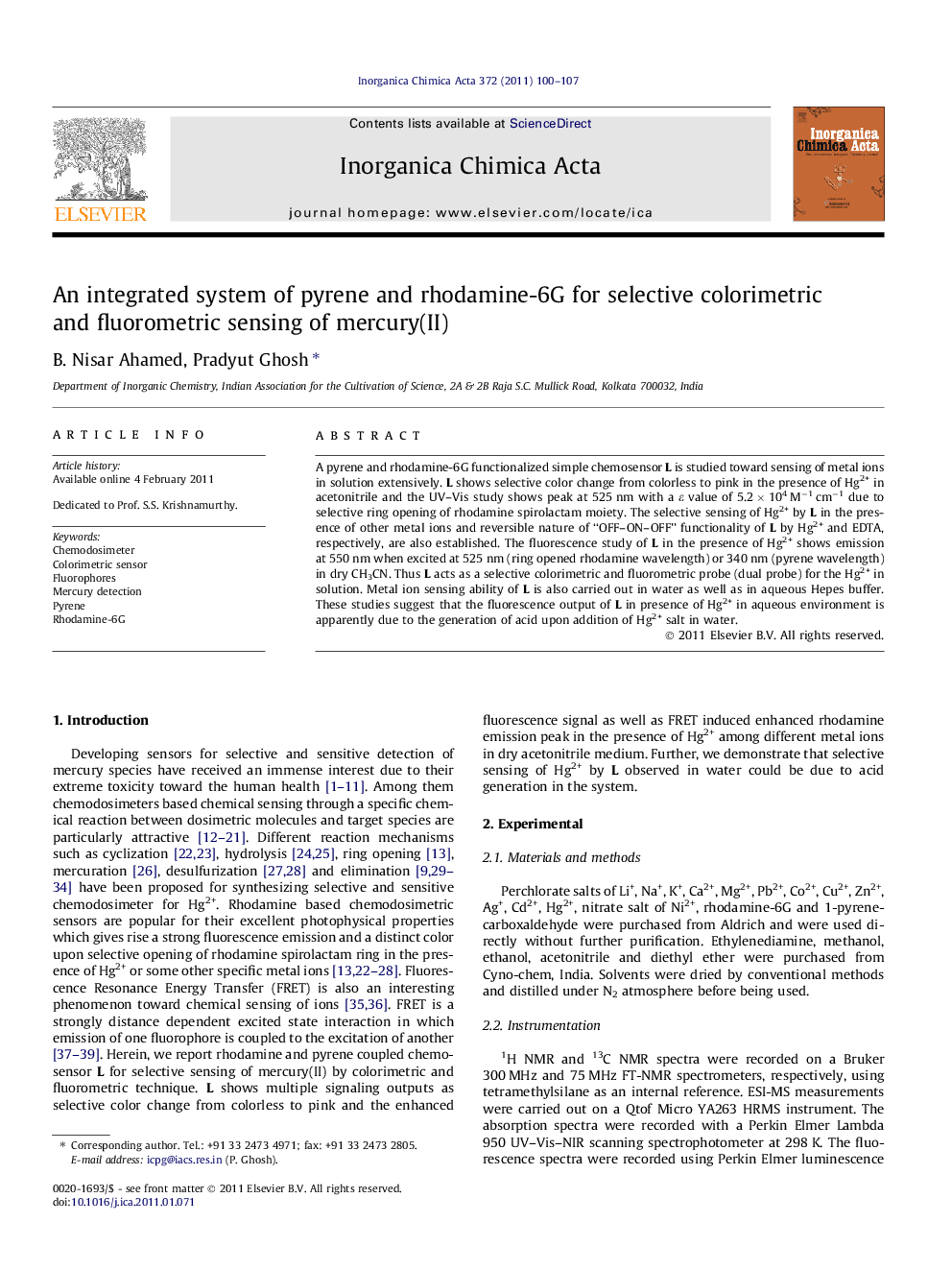| Article ID | Journal | Published Year | Pages | File Type |
|---|---|---|---|---|
| 1308878 | Inorganica Chimica Acta | 2011 | 8 Pages |
A pyrene and rhodamine-6G functionalized simple chemosensor L is studied toward sensing of metal ions in solution extensively. L shows selective color change from colorless to pink in the presence of Hg2+ in acetonitrile and the UV–Vis study shows peak at 525 nm with a ε value of 5.2 × 104 M−1 cm−1 due to selective ring opening of rhodamine spirolactam moiety. The selective sensing of Hg2+ by L in the presence of other metal ions and reversible nature of “OFF–ON–OFF” functionality of L by Hg2+ and EDTA, respectively, are also established. The fluorescence study of L in the presence of Hg2+ shows emission at 550 nm when excited at 525 nm (ring opened rhodamine wavelength) or 340 nm (pyrene wavelength) in dry CH3CN. Thus L acts as a selective colorimetric and fluorometric probe (dual probe) for the Hg2+ in solution. Metal ion sensing ability of L is also carried out in water as well as in aqueous Hepes buffer. These studies suggest that the fluorescence output of L in presence of Hg2+ in aqueous environment is apparently due to the generation of acid upon addition of Hg2+ salt in water.
Graphical abstractA simple pyrene functionalized rhodamine-6G based chemodosimeter, L shows selective colorimetric as well as fluorometric sensing of Hg2+ at a longer wavelength.Figure optionsDownload full-size imageDownload as PowerPoint slideResearch highlights► A pyrene–rhodamine based sensor L is studied toward sensing of metal ions. ► Hg2+ selective color change via selective spirolactam ring opening. ► The emission spectrum of L shows emission at 550 nm by exciting 525 or 340 nm. ► New peak at 550 nm when excited at 340 nm could be due to FRET.
